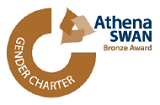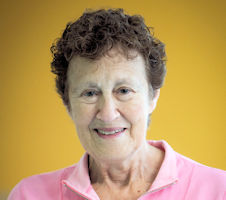

 |
Professor Barbara LiskovMITThanks so much for your email. I really appreciate the honor. |
Barbara Liskov is an Institute Professor at MIT. She is widely recognized for her work in programming languages, programming methodology, and distributed systems.
Liskov grew up in San Francisco and attended the University of California at Berkeley where she received a BA in Mathematics. She received her PhD from Stanford in Computer Science and joined the faculty at MIT in 1972 in the Electrical Engineering and Computer Science Department.
Liskov's research interests span a wide range of topics within computer science, including distributed systems, replication algorithms to provide fault-tolerance, programming methodology, and programming languages. Liskov's work in programming methodology led to the invention of the notion of data abstraction, which is an important underpinning of how software systems are organized today.
She and her group designed and implemented CLU, the first programming language to support data abstraction. Her research in distributed systems includes work on online storage systems that provide confidentiality and integrity for the stored information, and the development of two replication techniques that are in wide use today. The first, Viewstamped Replication, ensures correct behavior when computers fail by crashing. The second, PBFT (practical Byzantine Fault Tolerance) ensures correct behavior when computers and the network fail arbitrarily. Her current research includes work on techniques for implementing databases on multicore machines to achieve good scalability and performance, and investigation of new directions for programming languages.
Liskov is a member of the National Academy of Engineering, the National Academy of Sciences, the National Inventors Hall of Fame, and the Massachusetts Academy of Sciences. She is a fellow of the American Academy of Arts and Sciences and the Association for Computing Machinery, and a charter fellow of the National Academy of Inventors. She received the ACM Turing Award in 2009, the ACM SIGPLAN Programming Language Achievement Award in 2008, the IEEE Von Neumann medal in 2004, the IEEE Pioneer Award in 2018, a lifetime achievement award from the Society of Women Engineers in 1996, and in 2003 was named one of the 50 most important women in science by Discover Magazine.
"I went to college at UC Berkeley. I had always been interested in math and science and ended up with a major in math and a minor in physics.When I graduated in 1961 I decided I wasn't ready to go to graduate school. Instead I decided to move to Boston, where my father came from, and look for a job. I wasn't able to find anything interesting in math, but I was offered a job as a programmer. I knew nothing about computers; in fact I didn't even know there were computers. But that didn't prevent me from getting a job offer; at that point there were no computer science majors, so companies were hiring untrained people like me if they thought they could do the work.My first day on the job I was handed a Fortran manual and asked to write a program; I forget what the program was supposed to do. I discovered the work was very interesting and I was good at it. I think what was especially appealing to me was the combination of math and engineering: abstract reasoning and making things work. And thus started my career in Computer Science.
After a year at my first job, I switched to work at Harvard, where I was in charge of maintaining a very large program that was being used in a language translation research project. This program was written in machine language, which gave me a chance to learn the details of what the hardware was doing.During the fall of 1962 I applied to graduate school. At that point I was entirely self taught and I thought I could learn a lot faster in a graduate program. I was accepted at Stanford where they didn't yet have a computer science major; the department came into existence a couple of years after I arrived.I did my PhD thesis in AI, working with John McCarthy. I knew part way through my graduate studies that I wanted to switch to computer systems but I decided to stick with AI for the time being, since that was the fastest way to complete my thesis.
When I finished my PhD in 1968, I wasn't able to find a good job as a faculty member, so I returned to Mitre, the company where I had my first job, but this time as a researcher. All my research at Mitre was in computer systems, including work in machine architecture, operating systems, and programming methodology.In 1971 a paper I wrote on my operating system work was one of the prize papers at SOSP, the premiere conference in systems. As a result of that paper, and the talk I gave on the work, I was invited to apply for a faculty position at MIT. By then, conditions were changing and MIT was looking for women.
When I joined MIT in the fall of 1972, there were about 900 faculty members but only 10 were women. I was the first woman in computer science and the second in my department.When I look back on my career what I see is a random walk where doors opened and closed. I couldn't get a job as a mathematician, but that led me to computer science. Later I couldn't get a job as a faculty member but that gave me the freedom to switch into computer systems. Plus as I decided what step to take next, I was paying attention to what I was good at and what I enjoyed. Both properties are important if you're going to have a happy and successful career."
